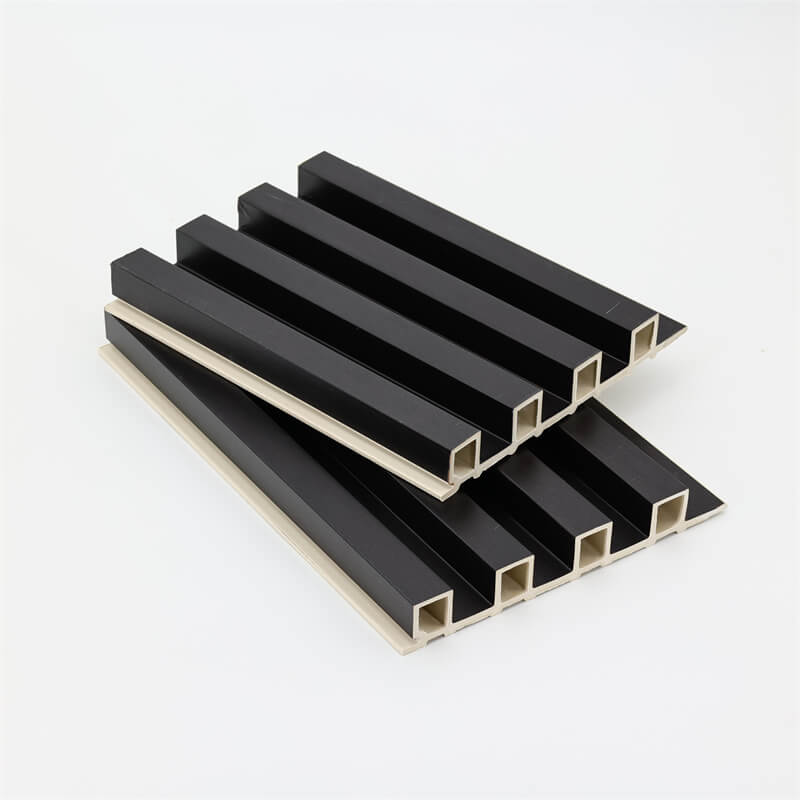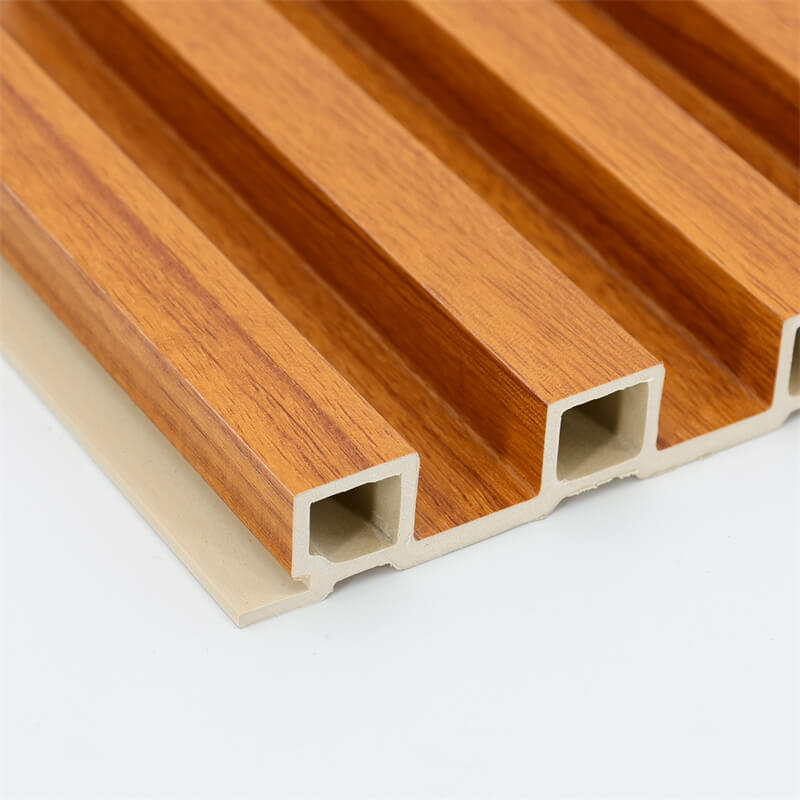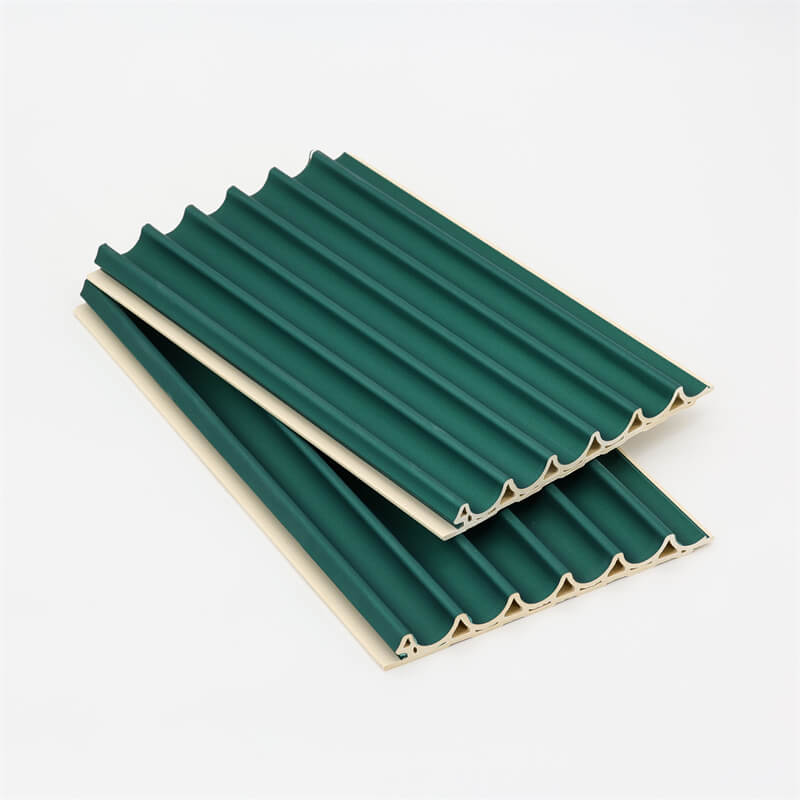
In modern interior design, finding durable and aesthetically pleasing materials for high-moisture areas such as bathrooms and kitchens has always been a challenge.
Traditional materials like wood and plywood are susceptible to moisture damage, leading to warping, rot, and mold growth.
However, technological advancements have introduced innovative solutions like Wood Plastic Composite (WPC) wall panels, which offer a compelling alternative.
In this essay, we will explore the features and benefits of WPC wall panels, their applications in high-moisture areas beyond bathrooms and kitchens, and their environmental impact.
Understanding WPC Wall Panels
1.1 Definition and Composition
Wood Plastic Composite (WPC) is a versatile material made from a combination of wood fibers or flour and thermoplastics,
typically derived from recycled plastics such as polyethylene, polypropylene, or PVC.
The wood component imparts natural aesthetics and stiffness to the material, while the plastic enhances durability and moisture resistance.
The combination of these elements creates a robust composite with numerous advantages for high-moisture environments.

1.2 Properties and Benefits
a) Moisture Resistance: One of the most significant advantages of WPC wall panels is their exceptional moisture resistance.
Unlike traditional wood or plywood, WPC does not absorb water, preventing issues like swelling, warping, and decay.
This makes it an ideal material for areas where moisture levels are high, such as bathrooms and kitchens.
b) Mold and Mildew Resistance: Thanks to its inherent moisture resistance, WPC is highly resistant to mold and mildew growth.
These panels provide a hygienic surface, reducing the risk of health hazards associated with damp environments.
c) Durability: WPC wall panels are known for their durability, ensuring a long lifespan and reducing the need for frequent replacements.
They can withstand the rigors of high-moisture areas, maintaining their structural integrity over time.
d) Aesthetics: WPC panels come in a wide range of colors, textures, and patterns, offering versatility in design options.
They can mimic the appearance of natural wood while providing superior performance in damp conditions.
WPC Wall Panels in Bathrooms
2.1 Advantages of WPC Wall Panels in Bathrooms
a) Waterproofing: Bathrooms are subjected to constant exposure to water and steam, making them highly susceptible to moisture-related issues.
WPC wall panels act as a waterproof barrier, protecting the underlying walls from water infiltration and damage.
b) Easy Maintenance: Cleaning and maintaining WPC wall panels in bathrooms are hassle-free.
They can be easily wiped down to remove soap scum, water stains, and other residues, keeping the bathroom walls looking fresh and clean.
c) Design Flexibility: WPC panels offer diverse design possibilities, allowing homeowners and interior designers to create stylish and visually appealing bathrooms.
The availability of various colors and textures ensures seamless integration with different bathroom themes.

2.2 Installation and Considerations
a) Installation Process: WPC wall panels are relatively easy to install and can be fixed directly onto the existing wall surface.
The panels often come with interlocking systems or tongue-and-groove edges, simplifying the installation process.
b) Substrate Preparation: Prior to installation, it’s essential to ensure that the substrate is dry, clean, and level.
Proper substrate preparation is crucial for the long-term performance of the WPC wall panels.
Subheading 3: WPC Wall Panels in Kitchens
3.1 Benefits of WPC Wall Panels in Kitchens
a) Protection against Splashes and Stains: Kitchens are prone to spills, splashes, and stains, especially around sinks and cooking areas.
WPC wall panels serve as a protective layer that is easy to clean and maintains the integrity of the walls.
b) Resistance to Grease and Oil: The non-porous nature of WPC panels makes them highly resistant to grease and oil, common elements present in kitchen environments.
This resistance ensures that the panels remain unaffected by these substances.
c) Hygienic Surface: WPC panels are non-absorbent, making them a hygienic choice for kitchen walls.
They do not trap food particles or bacteria, contributing to a cleaner and healthier cooking space.
3.2 Installation and Considerations
a) Vertical and Backsplash Applications: WPC wall panels can be used for both vertical walls and kitchen backsplashes.
Installing them as backsplashes can provide a functional and aesthetic solution, protecting the walls from water and stains.
b) Sealing and Caulking: Proper sealing and caulking around panel edges and joints are vital to prevent water infiltration and maintain the kitchen’s integrity.
Beyond Bathrooms and Kitchens: Other Applications
4.1 Commercial Spaces
WPC wall panels find applications in various commercial spaces, such as restaurants, hotels, gyms, and spas.
These areas often experience high foot traffic and exposure to moisture, necessitating a durable and visually appealing wall covering.
4.2 Residential Spaces
Apart from bathrooms and kitchens, WPC wall panels can be used in other residential spaces like basements, laundry rooms, and mudrooms.
These areas are prone to moisture due to their proximity to plumbing fixtures or outdoor access.
4.3 Exterior Applications
In addition to interior use, WPC wall panels can be utilized for certain exterior applications, such as covered patios or semi-enclosed spaces.
The moisture-resistant properties of WPC make it suitable for such areas where direct exposure to rain and humidity may occur.
WPC wall panels have emerged as a remarkable solution for high-moisture areas, providing a combination of durability, aesthetics, and moisture resistance.
Their successful implementation in bathrooms and kitchens has opened doors for their use in various other spaces, both residential and commercial.
With ongoing advancements in composite materials, WPC continues to evolve, offering eco-friendly alternatives to traditional building materials.
As technology progresses, we can expect even more innovative solutions to meet the challenges of high-moisture environments.
